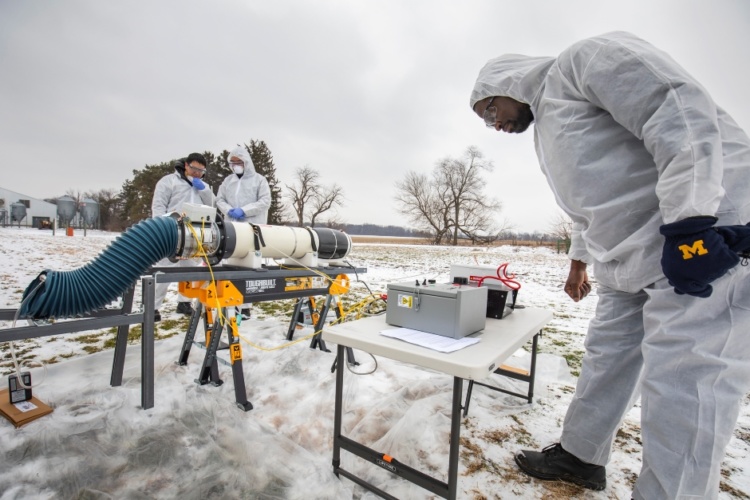
The research from the University of Michigan is said to be the first demonstration of non-thermal plasma used to inactivate an airborne virus known to cause disease in animals.
Cold plasma zapper could rid homes of allergens
In lab testing, airflow containing Porcine Reproductive and Respiratory Syndrome virus (PRRSv) passed through the reactor where it was exposed to charged, highly reactive fragments of air molecules. Tests showed that 95 per cent of the viruses were inactivated or removed during the process.
In 2017, Herek Clack, a U-M associate professor of civil and environmental engineering, led a team that developed the non-thermal plasma reactor and demonstrated its performance on PRRSv virus, achieving at least 95 per cent inactivation and removal of the virus particles. Results were published in the Journal of Hazardous Materials, but first appeared in 2017 on the website of the National Pork Board, which funded the study.
In 2019, Clack and his team challenged the non-thermal plasma reactor with a test virus, one harmless to humans. Those results reportedly showed 99.9 per cent of the test viruses were inactivated or removed from the air stream.
The research could represent a step toward next-generation collective protection technologies that can sterilise air supplied to inhabited enclosed environments like pig farms or public transport, such as commercial airline and cruise ship cabins. Clack foresees the technology replacing surgical masks, and it could also provide complementary protection during the long development cycle required for vaccines.
“This latest research showing comparable performance for two different types of viruses demonstrates that, unlike vaccines, the protective effect of non-thermal plasmas is not dependent on viral strain,” Clack said in a statement. “This would mean a broader basis for protection that doesn’t involve the months or years that are needed to develop specific vaccines for each novel or emerging viral disease.”
To gauge the effectiveness of non-thermal plasmas, researchers pumped PRRSv particles into flowing air as it enters a reactor. Inside, borosilicate glass beads are packed into a cylindrical shaped bed. The viruses flow with the air through the spaces between the beads, where they’re inactivated.
“In those void spaces, as the applied voltage increases the plasma is produced until sparks begin to initiate,” Clack said. “By passing through the packed bed, pathogens, such as viruses and bacteria in the air stream, are attacked by unstable molecular fragments called radicals. Afterwards, the virus has diminished ability to infect cells.”
During testing, researchers tracked the amount of viral genome present in the air at different stages during the trip through the reactor. In this way, Clack and his team were able to determine how much of the air sterilising effect was due to inactivation. With PRRSv, up to 95 per cent of sterilisation was due to inactivation, and with the test virus, that number was more than 99 per cent.
The approach - combining filtration and inactivation of airborne pathogens - could provide a more efficient way of sterilising air than either approach, filtration or inactivation, alone. Traditional surgical masks operate using only filtration for protection.
According to the university, ultraviolet radiation provides no filtration effect and cannot sterilise as quickly, as thoroughly or as compactly as non-thermal plasma.




Glasgow trial explores AR cues for autonomous road safety
They've ploughed into a few vulnerable road users in the past. Making that less likely will make it spectacularly easy to stop the traffic for...